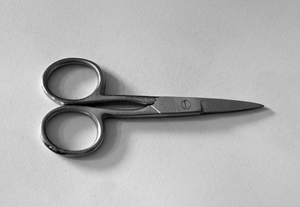No woman in her right mind would enter into an episiotomy willingly. But that’s precisely the problem – in the throes of labor, no woman is in her right mind. Blame it on adrenaline, the intense vulnerability of childbirth or the hunger for an end to labor. No matter the reason behind a woman’s consent of it, data show doctors performing this controversial snip on more than eleven percent of moms-to-be.
What is it?
An episiotomy is a procedure that involves cutting into the area between the vagina and rectum. Snipping this tissue is meant to widen the vaginal opening, making delivery easier and preventing tears. Doctors first started making the cut in the 1920s, when doing so was a routine aspect of delivery. In the decades that followed, the medical field fully embraced the practice, believing that preventative cutting would be neater and safer to stitch and fix than spontaneous tearing.
Why it’s not recommended
In 2005, a research study published in the Journal of the American Medical Association concluded that there were no benefits to this highly invasive procedure. That’s right, none. The American Congress of Obstetricians and Gynecologists soon followed suit, updating their guidelines to suggest restricted use of this practice. The guidelines cited several risks including deeper tears and lacerations, postpartum incontinence and pain during intercourse.
Despite these warnings, new research from the Leapfrog Group, a third party watch guard, reports that 65 percent of hospitals still perform episiotomies on 12 percent of laboring women. That’s significantly down from the 60 percent performed in the 1960s – but still alarmingly high for an incision that’s at best frowned upon.
When it’s necessary
There’s great debate over whether an episiotomy is ever truly necessary, but for those in favor, these situations would top their list:
- If the baby is breech: Breech babies, those who are positioned bottom down instead of head down, are rarely delivered naturally in the U.S. Having a baby in the breech position generally qualifies you for a Caesarean, though proponents of episiotomies claim that making a cut is helpful in this situation.
- If forceps or a vacuum are used: If a doctor must make use of forceps or vacuum to aid in delivery, he or she may perform an episiotomy first to allow for more room for the procedure.
- If the baby is malpositioned: Let’s say baby’s arm is holding up delivery. A doctor may make an incision in mom-to-be in order to deliver baby safely.
- If pushing continues for hours and baby’s heart rate is dropping. A doctor may wish to move very quickly, making an incision and retrieving baby by vacuum.
How to protect yourself
Talk to your doctor or midwife about his or her experience with this procedure. Be sure to ask if and when he or she would resort to it – and be very clear with your wishes. If you create a birth plan, it’s critical to state your case within this document. Let your health care team know an episiotomy is not an option for you. Making certain your provider understands your position now when you’re clearheaded, helps ensure you won’t be railroaded in the delivery room.
